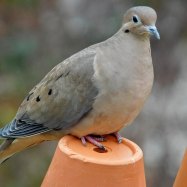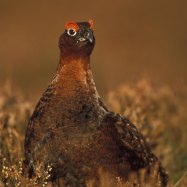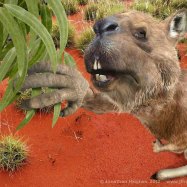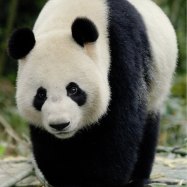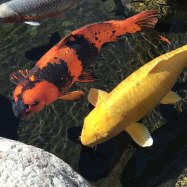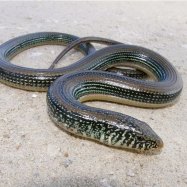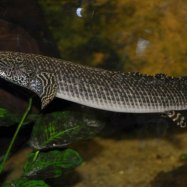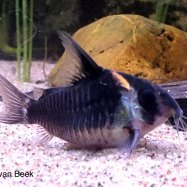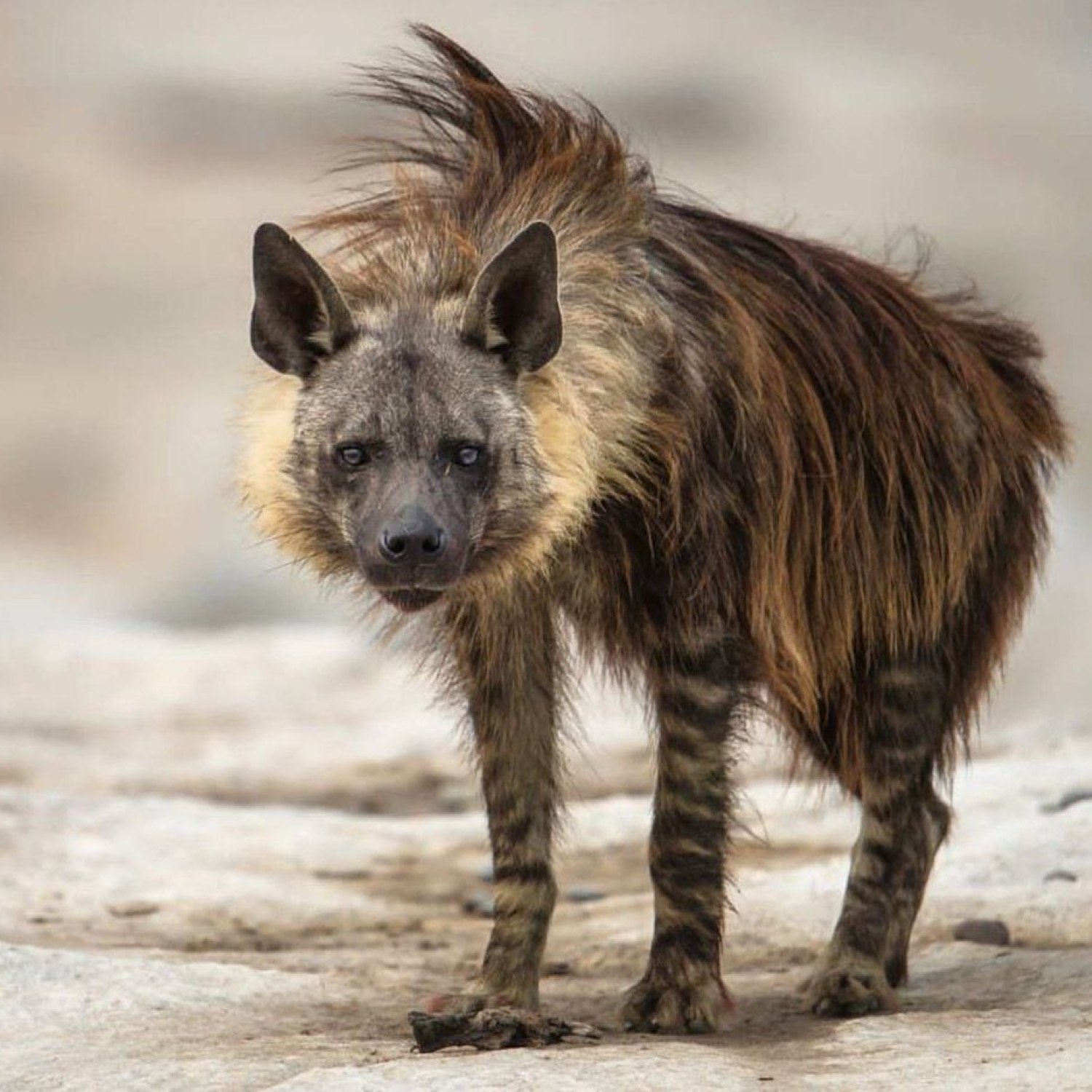
Brown Hyena
120-160 cm (47-63 in)
The Brown Hyena, found in the Kgalagadi Transfrontier Park and Kruger National Park, is a medium-sized animal with a sturdy build. Measuring 120-160 cm, this Hyaenidae family member is known for its powerful bite and scavenging abilities. #BrownHyena #KGTP #KrugerPark #Hyaenidae
Animal Details Summary:
Common Name: Brown Hyena
Kingdom: Animalia
Habitat: Savannahs, grasslands, semi-deserts
The Brown Hyena: A Resourceful Scavenger of Southern Africa's Savannahs
From the expansive savannahs of southern Africa emerges a fierce and cunning predator, the Brown Hyena. With its distinct sandy or light grey coat and sturdy build, this medium-sized carnivore is often overshadowed by its larger and more notorious relatives, the African lion and spotted hyena. However, the Brown Hyena's unique adaptations and behaviors make it a fascinating and resilient species, perfectly adapted to thrive in its harsh and ever-changing environment.The Species and Its Habitat
Scientifically known as Hyaena brunnea, the Brown Hyena belongs to the family Hyaenidae, alongside the spotted hyena, striped hyena, and aardwolf Brown Hyena. It is the only member of this family found in southern Africa, occupying a range that includes parts of South Africa, Botswana, Namibia, and Zimbabwe. It is found in a variety of habitats, including savannahs, grasslands, and semi-deserts.In South Africa, one of the best places to catch a glimpse of these elusive creatures is in the Kgalagadi Transfrontier Park and Kruger National Park. Here, visitors can observe these animals in their natural habitat, roaming the vast and striking landscape of the savannah.
Adaptive Features
The Brown Hyena's appearance and behavior set it apart from other predators in the region. It is smaller than its relatives, with a length of 120-160 cm and weighing between 40-55 kg. Its body is built for strength and endurance, with short legs and a powerful neck that supports its large skull and jaw muscles.One of the Brown Hyena's most striking features is its coat coloration, which can range from sandy to light grey or brown. This uniform coloring is an adaptation to its natural habitat, allowing the animal to blend in with its surroundings and avoid detection by potential predators Ball Python.
The Brown Hyena is also well-adapted to its opportunistic feeding habits. As an opportunistic scavenger, it relies on its strong sense of smell to locate and scavenge food from carcasses left behind by other predators. Its rounded ears and low-slung body also serve as adaptations to this foraging behavior, allowing it to listen for predators and quickly escape if necessary.
Behavior and Social Structure
The Brown Hyena is a solitary and elusive animal, preferring to hunt and scavenge alone. However, they have also been observed in small groups or "clans." These clans are usually composed of a breeding pair and their offspring, and they will work together to defend their territory and access to resources.Unlike other hyena species, the Brown Hyena has a large home range, covering up to 300 square kilometers. This allows them to search far and wide for food sources and avoid competition with other predators.
Despite their solitary and elusive nature, Brown Hyenas have a complex and fascinating communication system. They use vocalizations, body postures, and facial expressions to communicate with other members of their species and potential threats. They are also known to create dens, which are repurposed from abandoned burrows or crevices, to rest and give birth.
Role in the Ecosystem
As apex predators, Brown Hyenas play a crucial role in maintaining the balance of their ecosystem. They are vital in keeping herbivore populations in check, preventing overgrazing and ensuring the survival of plant species. As scavengers, they also assist in the decomposition of carcasses, which helps recycle vital nutrients back into the environment.However, these animals are often misunderstood and considered pests. Due to their scavenging behavior, they are sometimes perceived as a threat to livestock, leading to conflict with humans. This, coupled with habitat loss and persecution, has led to a decline in their population. The International Union for Conservation of Nature (IUCN) lists the Brown Hyena as "Near Threatened" on their Red List of Endangered Species.
Conservation Efforts
Thankfully, there are efforts in place to protect and conserve the Brown Hyena. In South Africa, the country of origin for this species, they are protected under the National Environmental Management: Biodiversity Act and the Convention on International Trade in Endangered Species of Wild Fauna and Flora (CITES). They are also found in many national parks and reserves, including the Kgalagadi Transfrontier Park and the Kruger National Park, where conservation efforts are ongoing.There are also initiatives focused on promoting coexistence between humans and Brown Hyenas. Education and research programs are being carried out to dispel myths and increase awareness about the importance of these animals in their ecosystem. Alternative methods, such as using guard dogs or electric fencing, are also being implemented to reduce conflicts between livestock and hyenas.
The Future of the Brown Hyena
Despite the challenges facing this species, there is reason to be hopeful for the future of the Brown Hyena. With increased conservation efforts and a deeper understanding of their role in the ecosystem, their numbers are slowly increasing. By protecting and preserving these animals, we can help maintain the balance of their ecosystem and ensure their survival for generations to come.In conclusion, the Brown Hyena may not be as well-known as its larger and more iconic relatives, but it is a species that deserves our attention and admiration. With its unique adaptations and behaviors, this intelligent and resourceful scavenger is a vital part of the ecosystem of southern Africa's savannahs. By learning more about these animals and supporting conservation efforts, we can help ensure a brighter future for the Brown Hyena and the delicate balance of its habitat.

Brown Hyena
Animal Details Brown Hyena - Scientific Name: Hyaena brunnea
- Category: Animals B
- Scientific Name: Hyaena brunnea
- Common Name: Brown Hyena
- Kingdom: Animalia
- Phylum: Chordata
- Class: Mammalia
- Order: Carnivora
- Family: Hyaenidae
- Habitat: Savannahs, grasslands, semi-deserts
- Feeding Method: Opportunistic scavenger
- Geographical Distribution: Southern Africa
- Country of Origin: South Africa
- Location: Kgalagadi Transfrontier Park, Kruger National Park
- Animal Coloration: Uniform sandy, light gray or brown colors
- Body Shape: Medium-sized with sturdy build
- Length: 120-160 cm (47-63 in)
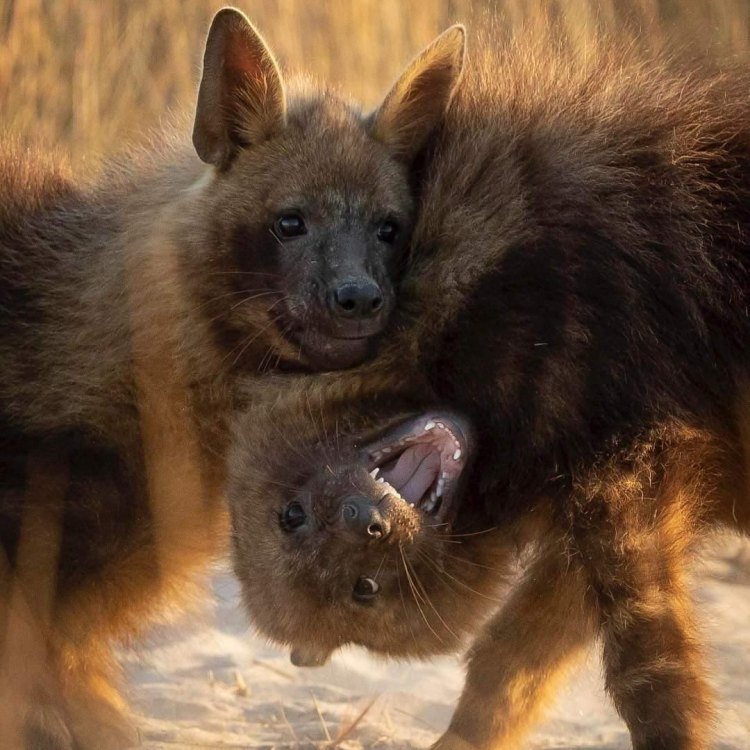
Brown Hyena
- Adult Size: 40-45 kg (88-99 lb)
- Average Lifespan: Up to 25 years
- Reproduction: Sexual reproduction
- Reproductive Behavior: Monogamous
- Sound or Call: Grunts, whoops, growls
- Migration Pattern: Generally non-migratory
- Social Groups: Solitary or in small groups
- Behavior: Nocturnal, secretive
- Threats: Habitat loss, competition with other predators, persecution
- Conservation Status: Near Threatened
- Impact on Ecosystem: Scavengers that help keep ecosystems clean
- Human Use: Hunted for fur and perceived threat to livestock
- Distinctive Features: Shaggy coat, stripes on front legs
- Interesting Facts: Only member of the hyena family that lives in Southern Africa
- Predator: Lions, leopards, Cape hunting dogs
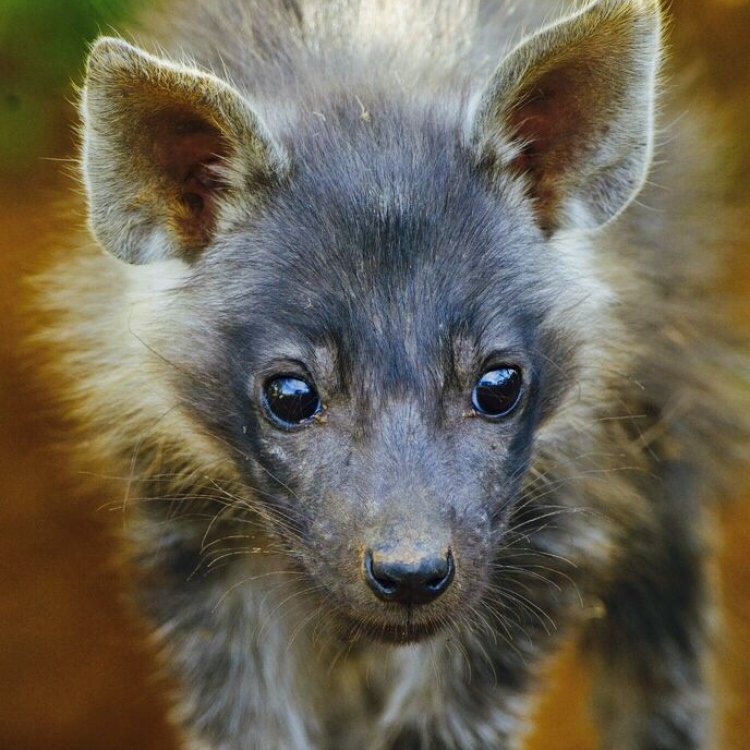
Hyaena brunnea
The Fascinating World of Brown Hyenas
In the vast landscapes of Southern Africa, hidden behind the shadows of iconic predators like lions and leopards, lives a unique and fascinating creature - the brown hyena. Often misunderstood and overshadowed by its larger and more well-known counterparts, this solitary and nocturnal animal has a rich and complex existence that deserves to be explored. In this article, we will delve into the world of the brown hyena, uncovering its distinctive features, behavior, and the threats it faces, as well as its important role in the ecosystem and its relationship with humans.Size and Lifespan
The brown hyena (Parahyaena brunnea) is a medium-sized mammal, weighing between 40-45 kg (88-99 lb) and standing at around 70 cm (2 PeaceOfAnimals.Com.3 ft) tall. They have a shaggy coat that is typically sandy or light brown in color, with darker spots and stripes on their front legs. This unique coloration helps them blend into their surroundings, making them the perfect stealthy hunters.In terms of lifespan, brown hyenas can live up to 25 years in the wild, but their lifespan is often shorter due to various threats they face, such as habitat loss and human persecution.
Reproduction and Social Behavior
Brown hyenas engage in sexual reproduction, meaning they need a male and female to mate and produce offspring. They are monogamous animals, meaning they mate for life, and both genders play an active role in raising their young. Unlike other hyena species, brown hyenas do not live in large clans and are instead solitary or found in small groups of 2-3 individuals.The female gives birth to 2-4 cubs after a gestation period of around 90 days. The cubs stay with their mother for up to two years, learning essential survival skills and forming strong bonds Basset Hound. This prolonged period of maternal care is crucial for the survival of the cubs, especially since brown hyenas face significant challenges in the wild.
Nocturnal and Secretive Behavior
One of the most intriguing aspects of the brown hyena's behavior is that it is predominantly nocturnal and secretive. They are rarely seen during the day, and when they do emerge from their dens, they are incredibly cautious and shy, avoiding contact with humans and other predators.This behavior is likely a result of centuries of persecution and negative perceptions towards hyenas, leading them to become more secretive and elusive in their habits. However, their nocturnal nature also plays a vital role in their survival, as it helps them avoid competition with other predators, primarily the larger and more dominant lions and leopards.
The Unique Sounds of Brown Hyenas
While they may be elusive and shy, brown hyenas are not silent creatures. In fact, they are quite vocal, using a variety of sounds to communicate with each other. These include grunts, whoops, and growls, which can often be heard echoing through the African night.Along with vocalization, they also use scent marking to communicate and mark their territories. Brown hyenas have scent glands on their anal pouch, which they use to leave chemical messages for other hyenas in the area.
Non-Migratory and Solitary Living
Unlike other hyena species, which are known for their large clans and territorial behavior, brown hyenas are generally non-migratory and solitary. They have smaller home ranges and do not defend their territories aggressively. However, they still have a strong sense of territoriality and will mark their territory with a unique scent, often giving warning signals to other hyenas to stay away.This solitary lifestyle may also be a defense mechanism against their larger and more dominant cousins, who may see them as competition for food and space.
The Threats Facing Brown Hyenas
Despite their important role in the ecosystem and their fascinating behavior, brown hyenas face numerous threats that are putting their survival at risk. One of the biggest threats is habitat loss, as human development and agriculture continue to encroach on their natural habitat.Additionally, brown hyenas also face competition with other predators, primarily lions and leopards, for food and space. This competition can also lead to direct conflicts, resulting in injury or death for the hyenas.
Sadly, human perceptions and superstitions about hyenas have also led to their persecution and illegal killing, further impacting their already small and fragmented populations. They are sometimes hunted for their fur, which is then sold in the black market, and are also seen as a threat to livestock, leading to retaliatory killings by farmers.
The Near Threatened Conservation Status
Due to these various threats, the brown hyena is listed as Near Threatened on the IUCN (International Union for Conservation of Nature) Red List. This means that it is at high risk of extinction in the near future if conservation efforts are not implemented.Fortunately, there are ongoing conservation efforts and initiatives aimed at protecting these elusive animals. These include monitoring their populations, studying their behavior, and implementing measures to reduce human-wildlife conflicts and promote coexistence.
The Role of Brown Hyenas in the Ecosystem
Apart from being fascinating and unique animals, brown hyenas also play a vital role in maintaining the health of their ecosystem. As scavengers, they help keep the environment clean by feeding on carrion and carcasses that would otherwise attract disease and harmful bacteria.Their presence also helps regulate the populations of other scavengers, ensuring a balance in the food chain. Therefore, protecting brown hyenas is not just essential for their survival but also for the overall health and balance of their ecosystem.
A Complex Relationship with Humans
Humans have a long and complicated history with hyenas, with most cultures portraying them as evil and dangerous predators. However, as with many misunderstood animals, there is much more to their story.In traditional African cultures, hyenas are often represented as powerful and important symbols, with some even seen as spiritual creatures. However, with the rise of modernization and Western influences, the perception of hyenas as dangerous and dirty has become more widespread.
This negative perception has had a detrimental impact on the survival of brown hyenas, with humans often viewing them as pests and killing them without understanding their role in the ecosystem. This conflict between humans and hyenas highlights the importance of education and the need to debunk myths and misinformation about these animals.
In Conclusion
The brown hyena is a fascinating and highly adaptable animal, uniquely adapted to the challenging environments of Southern Africa. Although facing numerous threats, they continue to survive and play a crucial role in maintaining healthy ecosystems. As humans, it is our responsibility to protect and value these animals, understanding their importance and promoting coexistence for the benefit of all species. Hopefully, this article has shed some light on the often-overlooked world of the brown hyena and inspired a deeper appreciation for this incredible animal.
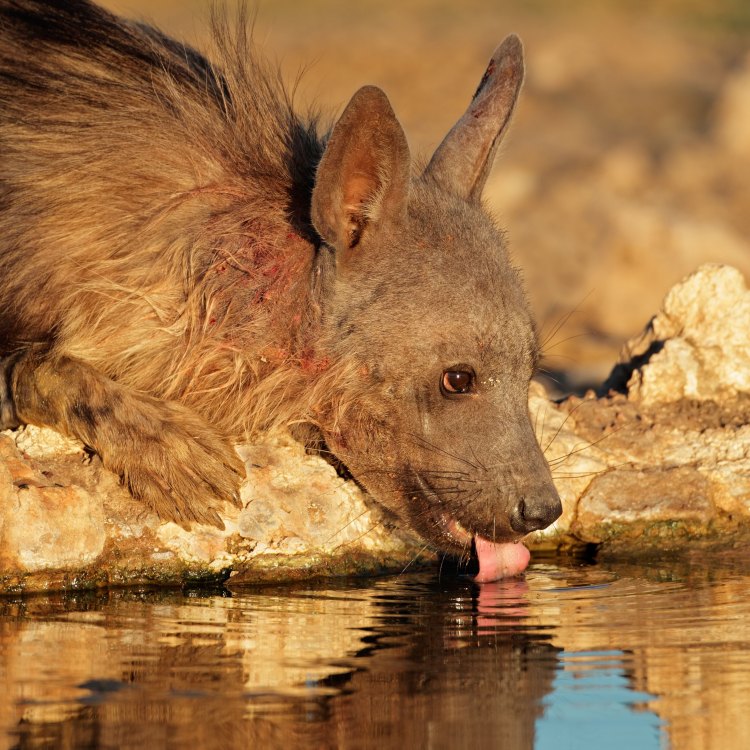
The Brown Hyena: A Resourceful Scavenger of Southern Africa's Savannahs
Disclaimer: The content provided is for informational purposes only. We cannot guarantee the accuracy of the information on this page 100%. All information provided here may change without prior notice.

